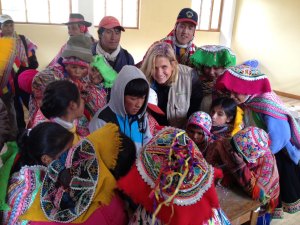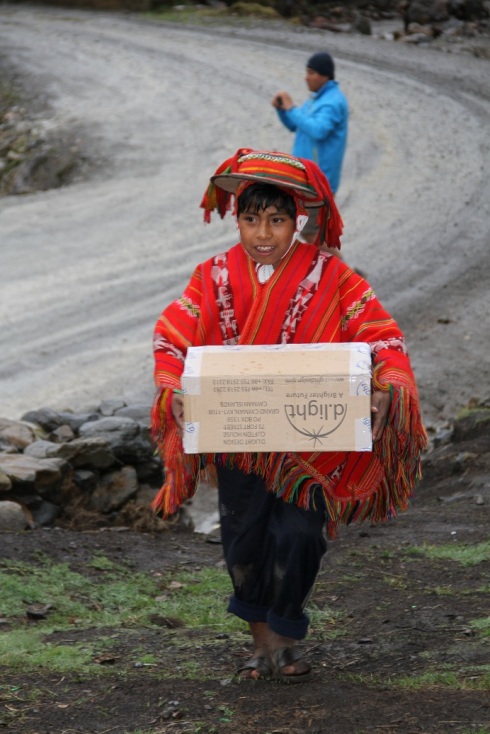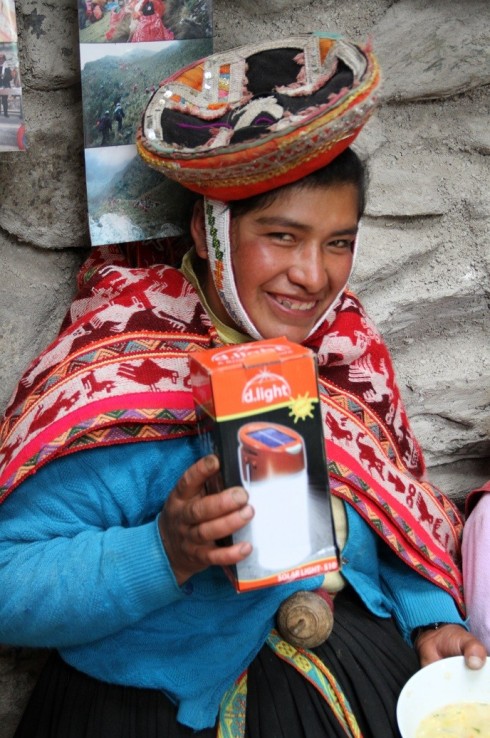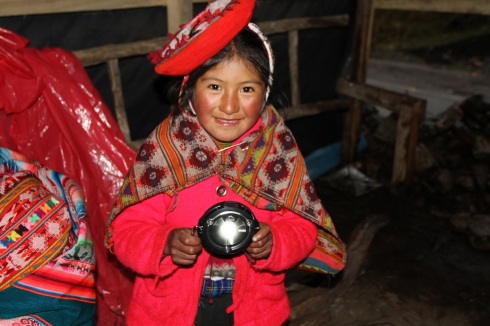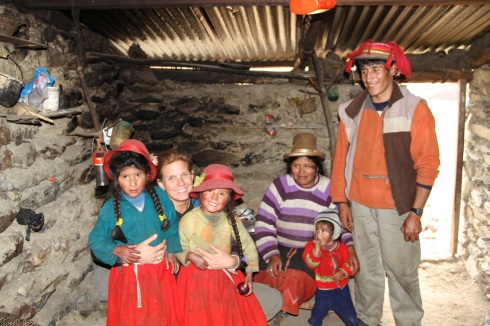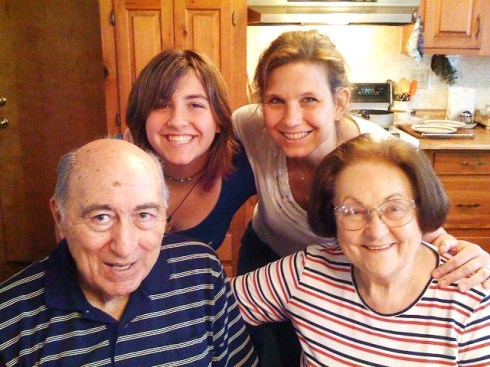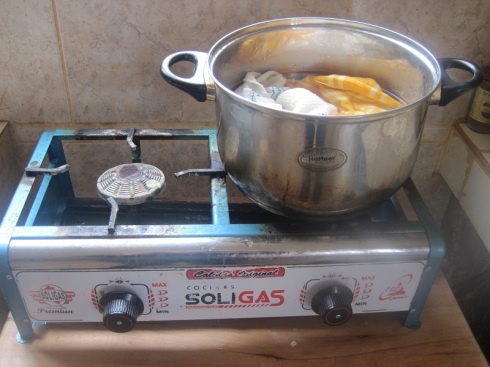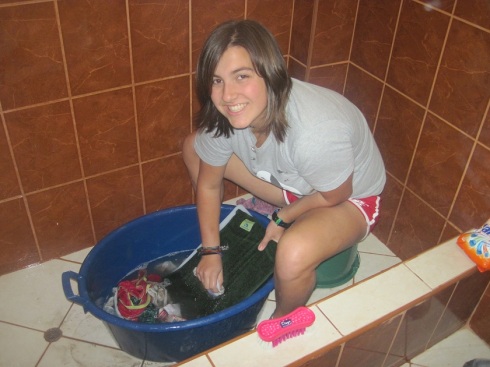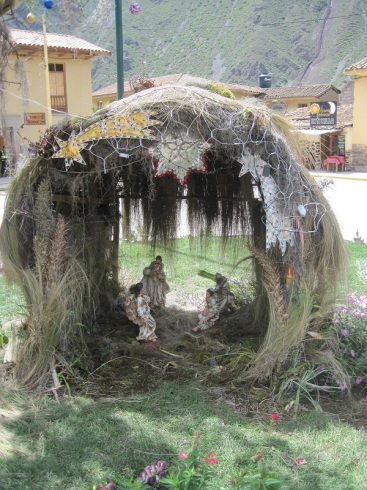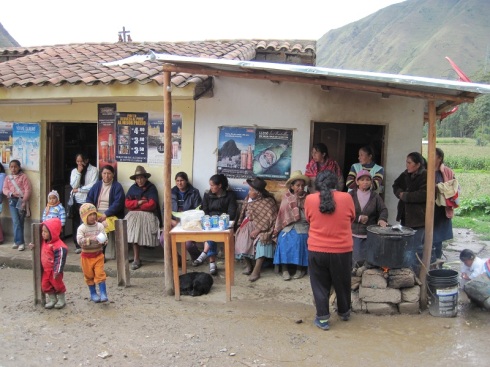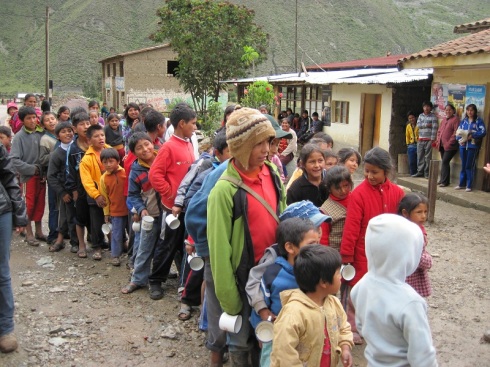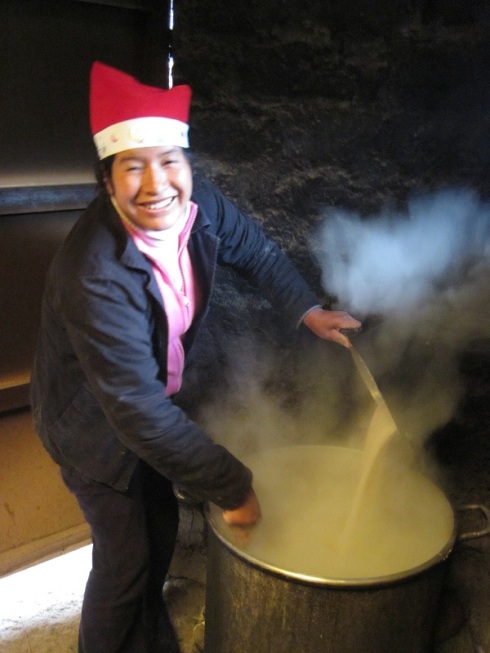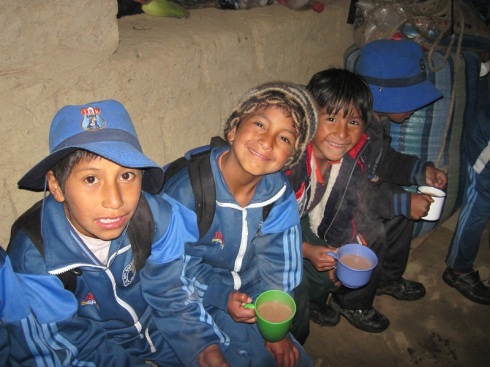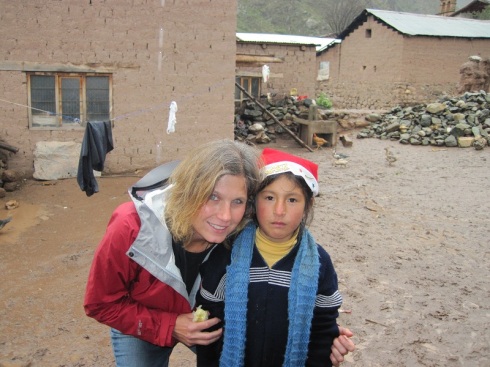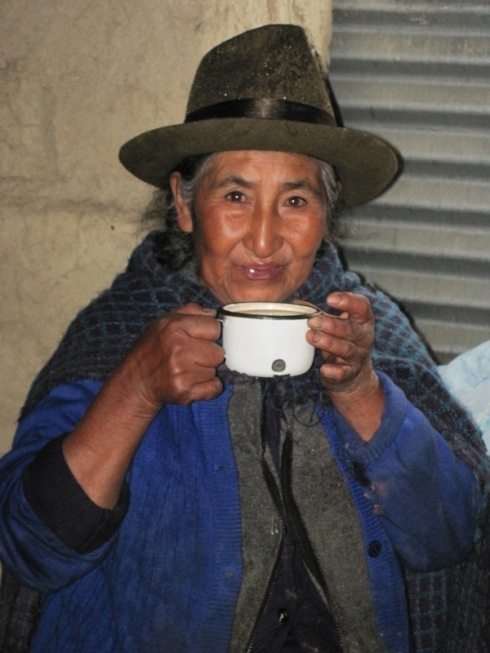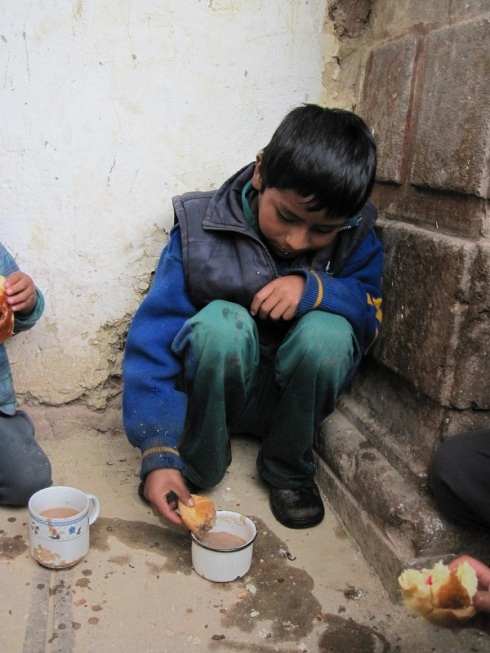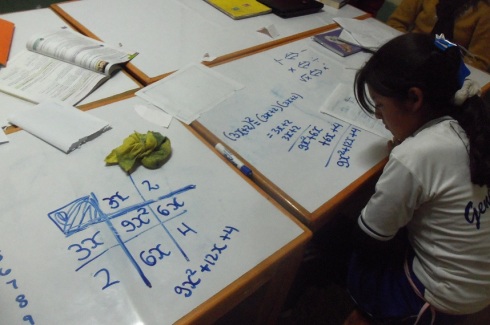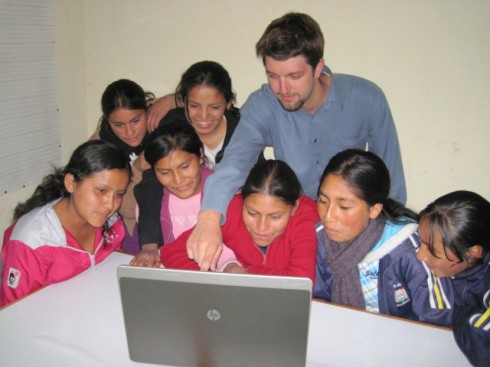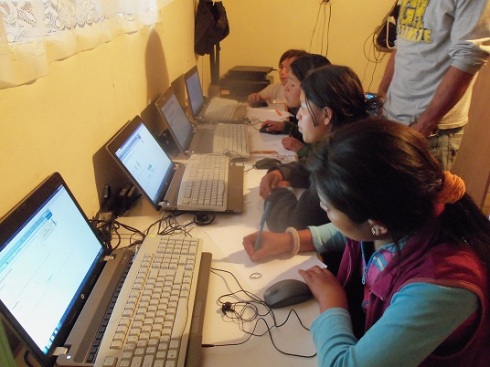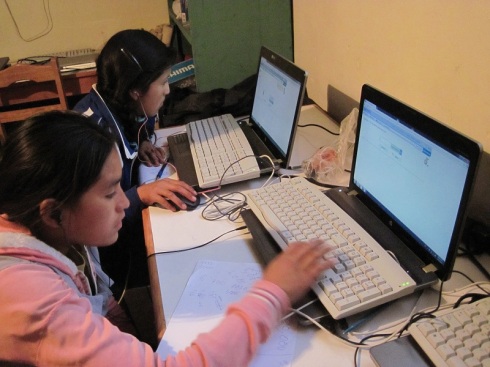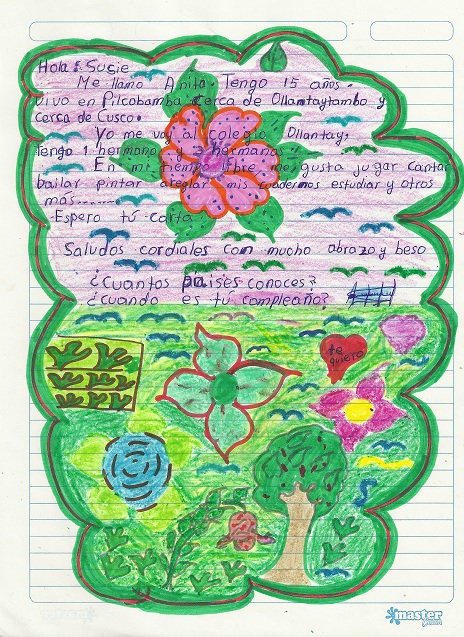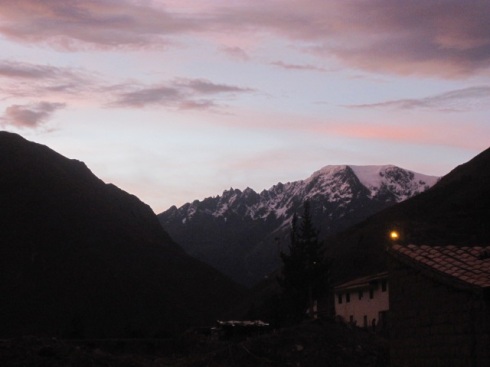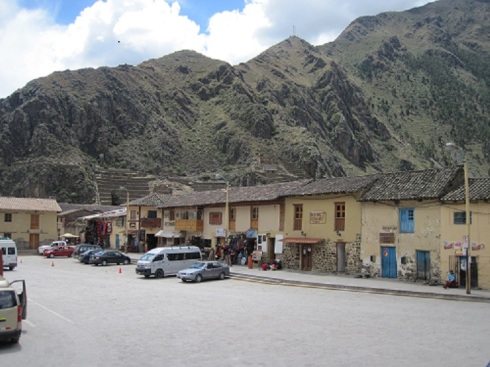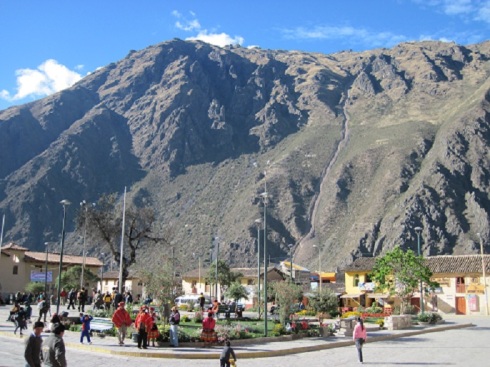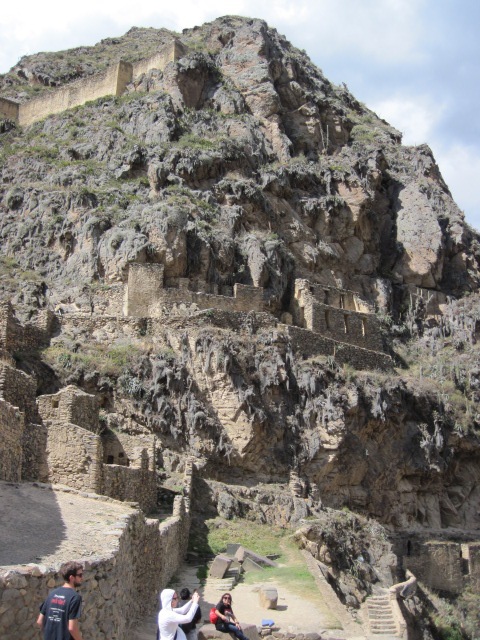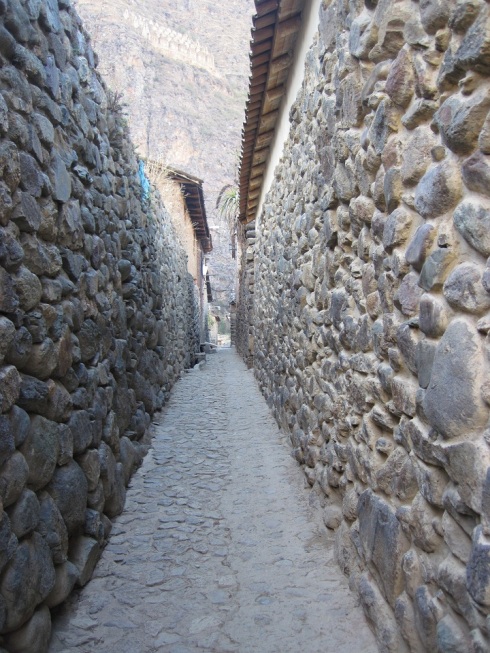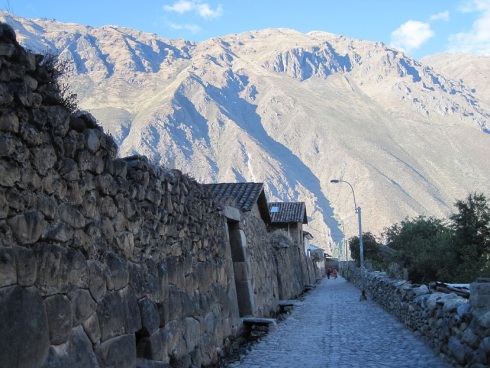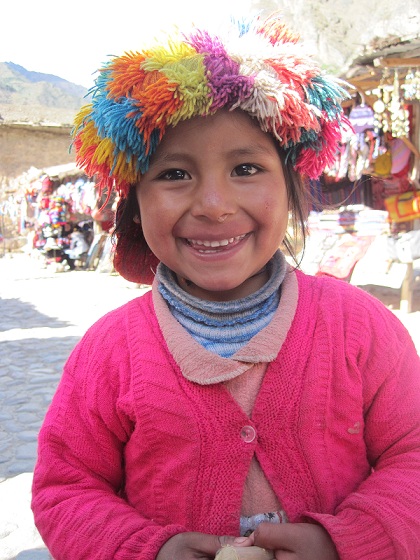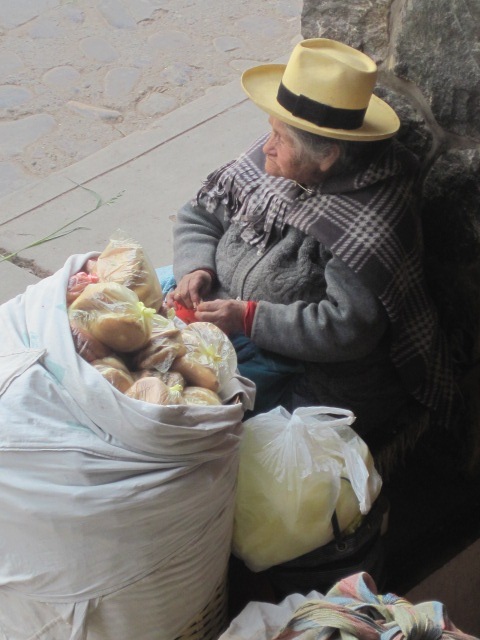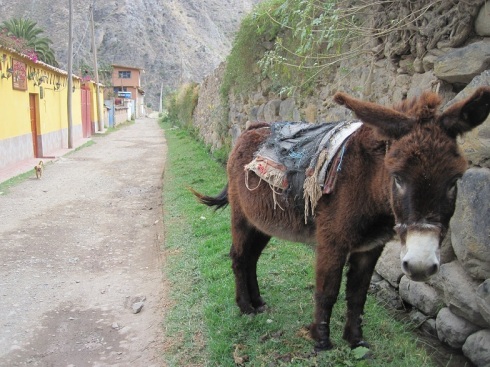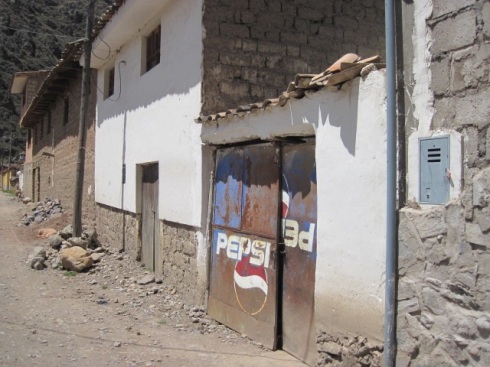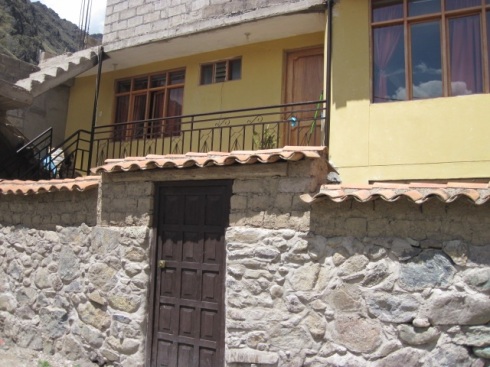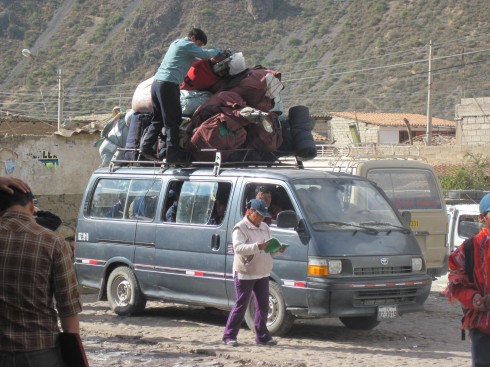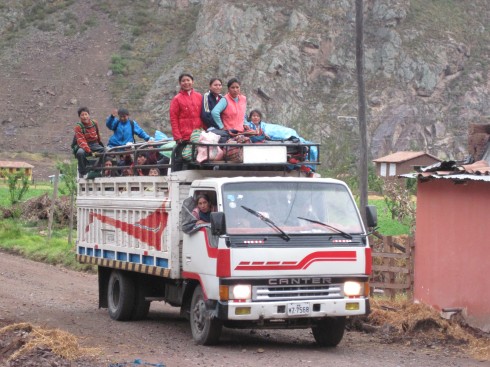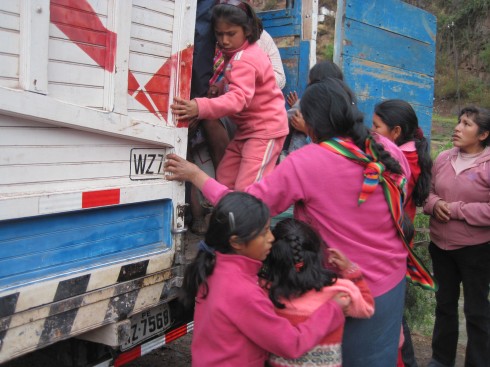The town of Ollantaytambo, where I live, is 9,250 feet above sea level. Sound impressive? Well let’s see…. in the U.S, the town that I live in, in the foothills of the Berkshire Mountains, is at an altitude of a whopping 801 ft. And, where my dear son is at University, is all of 50 ft. So, yes, I’d say, it’s impressive. However……… we are in a valley. Hence the name. (Sacred Valley – for those of you new here.) So, needless to stay, we are living at a pretty high altitude. It takes most visitors a few days to adjust to the altitude, and pharmacies in the bigger cities of Cusco and Arequipa even sell personal cans of oxygen that you can purchase to stick in your backpack for moments of wooziness. But, my dear readers, 9,250 feet is just where our trek begins.
My last post detailed our truck ride up into Socma – one town that two of our girls live in. Socma is about 13,000 feet above sea level. So now we are really getting up there. The amazing thing is that the people who live in these mountain villages are totally self-sustainable. They farm the land and raise animals. When I think of farms, I think of huge spans of rich, flat fields. Not so in the mountains. Take a look for yourself:
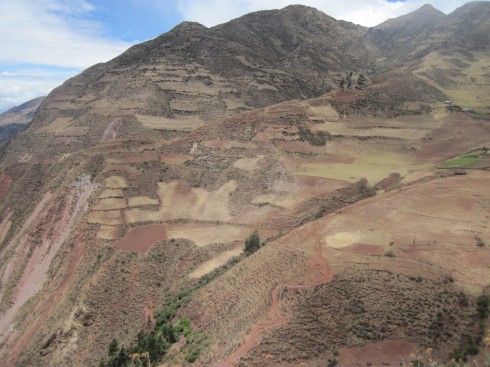
Imagine Farming This Land!
The first stop in Socma was at Nohemi’s house, where we were graciously invited for dinner. We would also stay in this community for the night – in a guest house that has been set up to accommodate random travelers. The families of our girls are always thrilled to see Alex and whoever may be traveling with him. Needless to say, we were treated like royalty. You will notice that all of the houses are made from mud bricks. This is typical. Although you may see power lines in Socma, there is actually no electricity. Yet. A year or so ago, Alex created a project called “Light Up Socma” which brought power lines up to this remote village. They haven’t been turned on yet. So, the villages we visited have no electricity, no running water, certainly no indoor plumbing, and really none of the modern conveniences we are all so used to in first world countries.
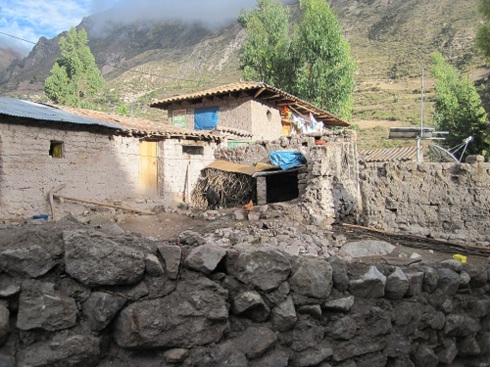
Nohemi's Community
In the morning, we rose early, with the sun – as do all people in the mountains, were treated to a breakfast of oatmeal drink and tea, and headed off to our next community, Markuray. The 2 hour hike, which brought us up another 2,000 feet, was exhausting. We had only brought day packs with our sleeping bags and food, but the altitude of 15,000 feet was killing me. I still was not totally adjusted to living this high up to begin with, and trying to keep up with the ‘kids’ in the group that are 25 to 35 years younger than me was a challenge. All I could think of was the old song from Frosty the Snowman “put one foot in front of the other….” and I kept going. I could not believe that this was the hike that Maribel, the student that we were going to visit, did every weekend to get home. I need to remember this the next time I am stuck in traffic.
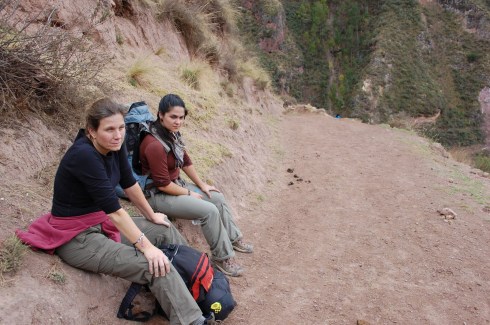
Yes, We Were Tired
We arrived at Maribel’s house mid-morning, where once again, we were greeted by her entire family – parents, siblings and cousins. They had been awaiting our arrival. It is rare to see gringos in the mountain communities, and we were not just any gringos – we were accompanied by Alex – the founder of The Sacred Valley Project that has given their daughter an opportunity to become educated. Needless to say, we were treated very well.
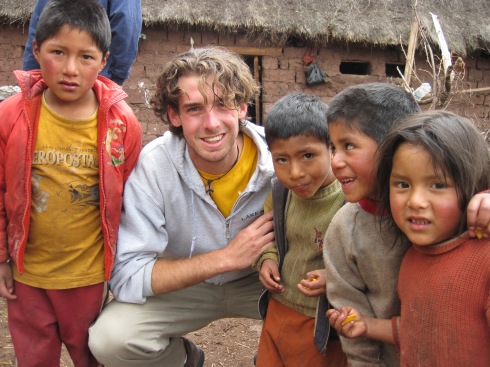
The Kids love Alex
We were ushered into their one room mud house, where the entire family sleeps, her mom cooks over a wood fire, and they raise guinea pigs. Yes, that’s right. As we sat on the floor and had our delicious coffee, potatoes, and egg, there were guinea pigs running around our feet. Many families raise guinea pig or cuy to sell to restaurants as a delicacy. It can be a pretty good source of income.
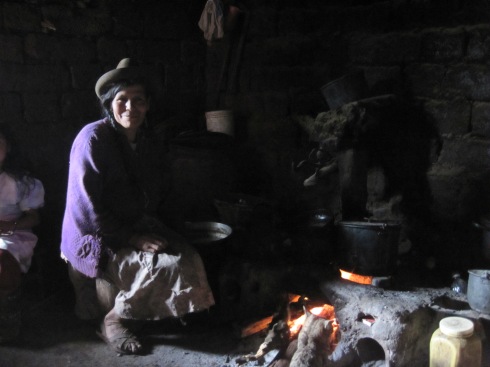
Maribel's Mom Cooks for Us
We were also accompanied by Bianca, another founding member of The Sacred Valley Project, and a real role model for the girls.
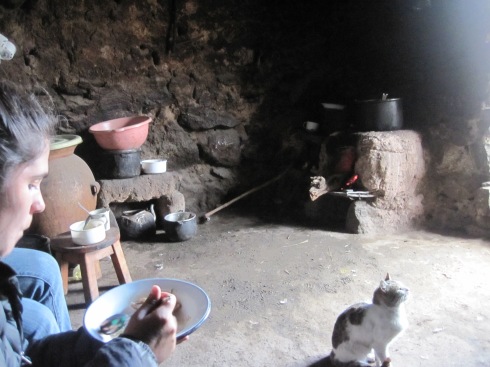
A Humble Meal
Outside, Maribel’s father was proud to show us his plot of land that he diligently farms. He had all sorts of vegetables – potatoes, cauliflower, beans, herbs… and elderberry trees.

Maribel's House
Although it was tempting to stay longer – it was not even noon yet and I was totally exhausted, we had to push on to the next community – Ryan – where Elisabeth lives. Another hour and a half up higher into the mountains. Again, my admiration for Elisabeth and her family increased with every painful step that I took. Did she really hike this every Friday after school? The dedication of this girl and her family – to get to our dormitory every week was unfathomable to me. How can I explain this to my kids? How can I explain this to anyone back home? I don’t know. There are no roads to her community – the only one that did exist was wiped out in a landslide a few years ago. The elementary school for her community is serviced by a teacher who comes on motorcycle… sometimes. Anyway, our grueling hike to visit Elisabeth in Ryan turned up empty-handed. A neighbor told us that Elisabeth’s family was out tending their sheep. Well, I guess it was not really empty-handed. Although we did not get to meet with the family, I gained a true appreciation for the mountain people. The simple, yet physically hard life that they live.
We headed around the mountain, in search of our next family, in Pilcobamba. As we hiked, we came across a set of Incan ruins. Why were they there? Why were these families here?
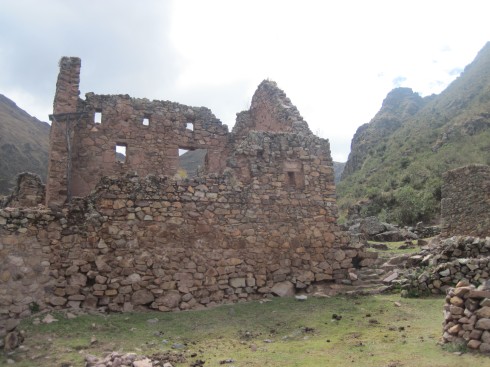
Incan Ruins
Why on earth would anyone choose such a desperate place to live? I don’t know. Maybe it’s about the view. Maybe it’s because that’s where they could find land to farm…. Maybe they don’t see what the big deal is, living at 15,000 feet – the height that jet planes fly at. Maybe it’s just what they are used to. The same way that other people are just used to living in Connecticut, or New York City, or Iowa. No big deal. But I don’t know many people who roll out of bed and see a view like this….
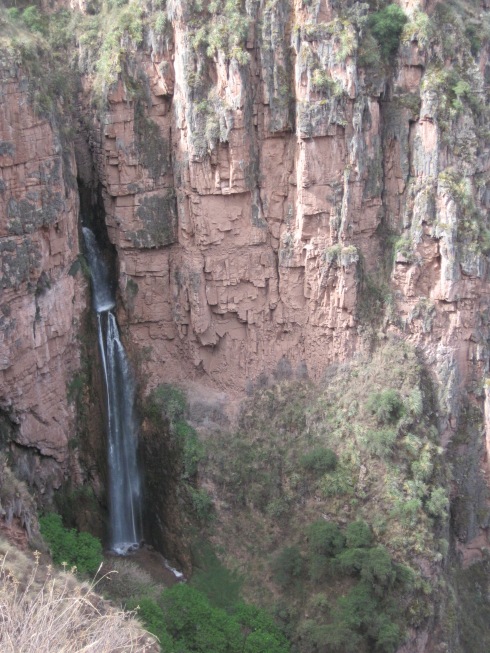
Amazing Waterfall
Or this…..

It's All About the View
Amazing. That’s all I can say. It was mid afternoon by the time we arrived in Pilcobamba. Anita’s family had been waiting for us, and of course insisted that we have a meal with them. Her mom had killed a chicken. This was a big deal. We were getting a little worried about the time – we still had a good 3 hour hike down the mountain to get to a road where we could hitchhike back home. But the love and gratitude of Anita’s family was so overwhelming that we had no choice but to stay and wait while the meal was prepared. After the meal, we hastily said our good-byes. Anita walked with us for about 20 minutes, to show us a shortcut to the trail back home.
The rest of the hike down was excruciating for me. As hard as it had been to breathe on the way up, I was in agony from the pain on my feet from the steepness of the mountains on the way down. My hiking boots were a tad too big – and my toes kept jamming into the front of my boots with each step on the way down. Every step was painful. I felt as if my feet were a bloody mess. (In fact, when I took my boots off at home, I realized they were. My toenails are still completely black – weeks later.) But each step made me think more and more about our girls and their families. This was their life. And they were happy. They had little to no modern conveniences. They had excruciating hikes to get anywhere. And we are not talking to get to the mall or McDonald’s. We are talking about just getting to a town that has a school. And a small market. That’s it. This is a life lesson that I believe will always stay with me. The next time I have to wait in line at the supermarket, with my overstuffed basket of pre-killed animals, and blemish-free fruits and vegetables, I will think of Nohemi, and Maria Elena, Maribel, Elisabeth and Anita… who have never even seen a supermarket. And who have to walk up to eight hours to get to school. And I will be grateful for all that I have – and whistful of this place that is much simpler.
